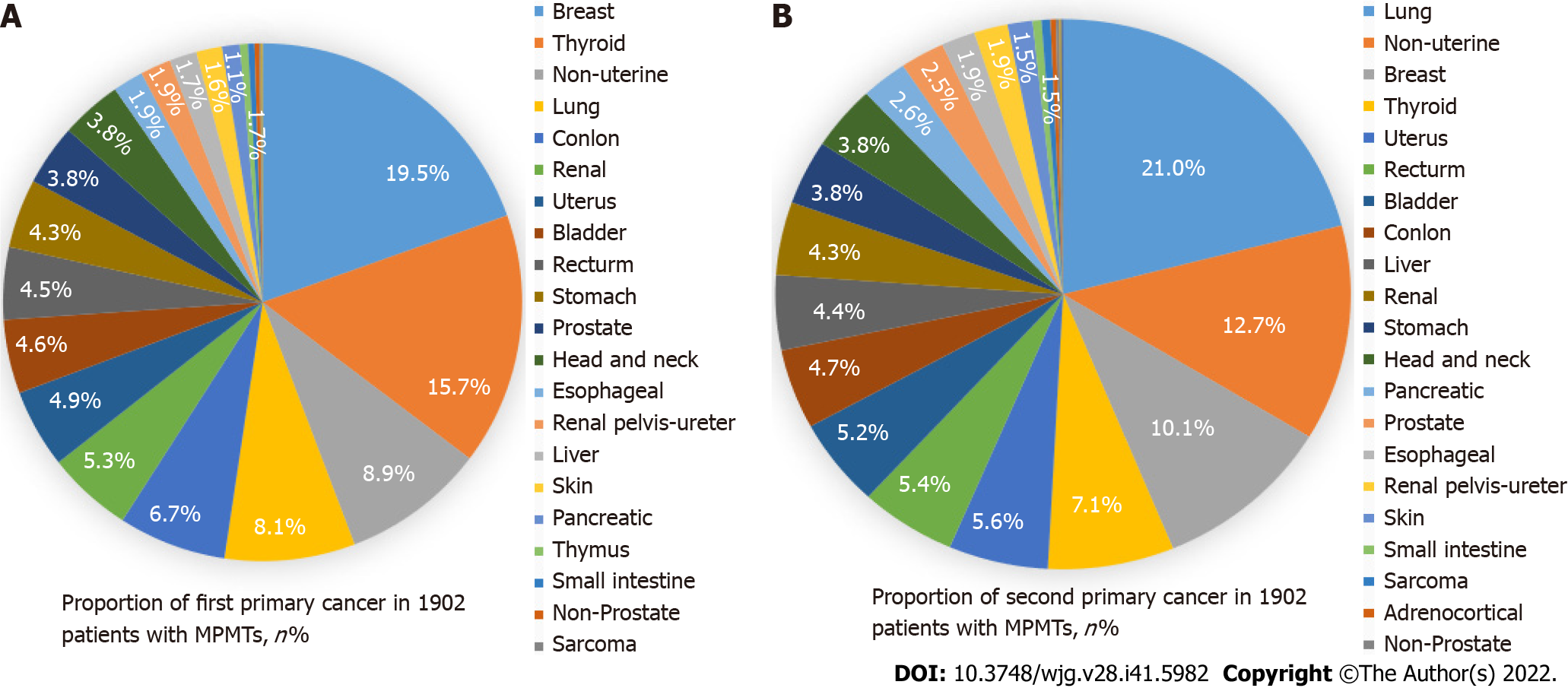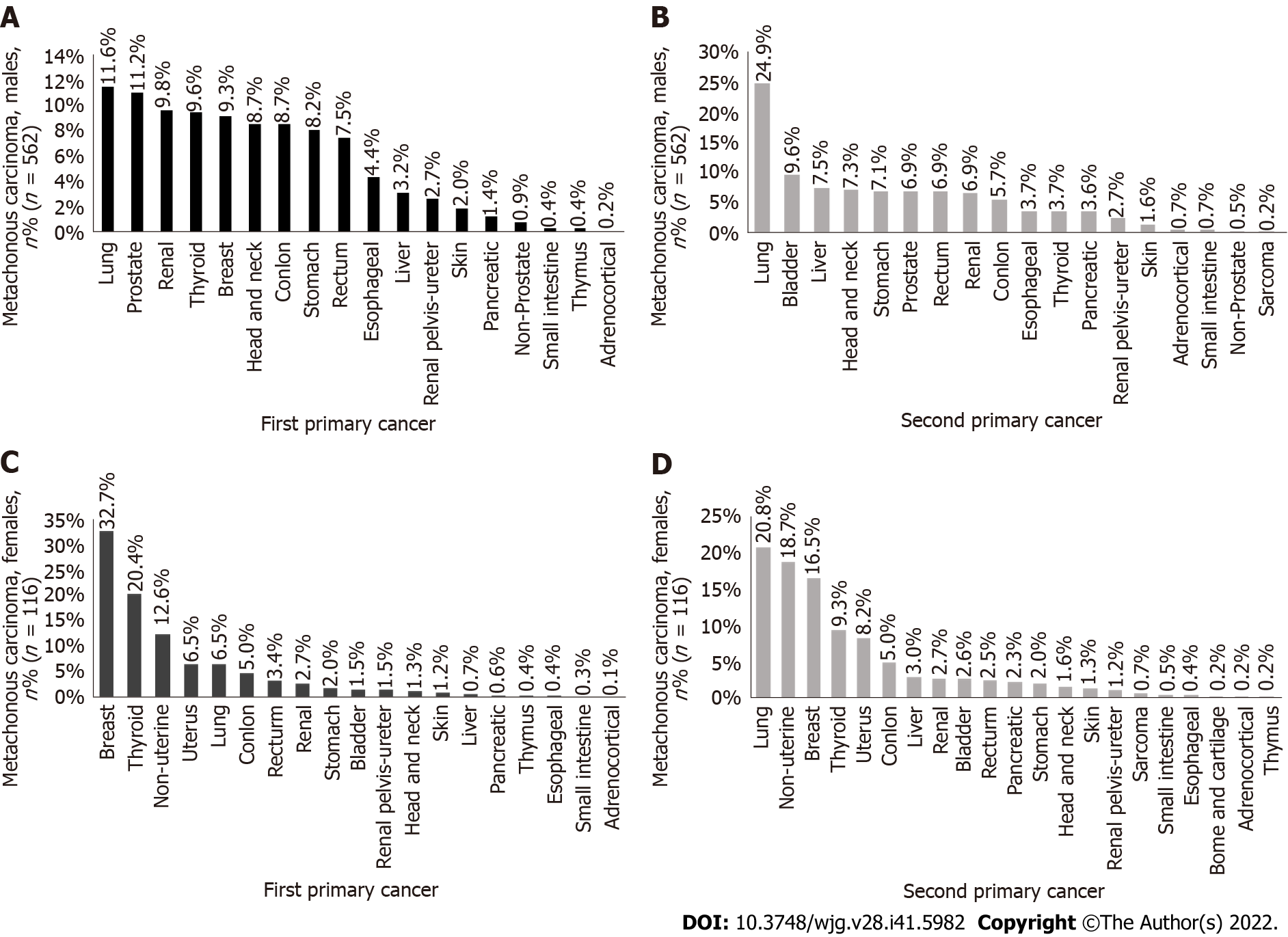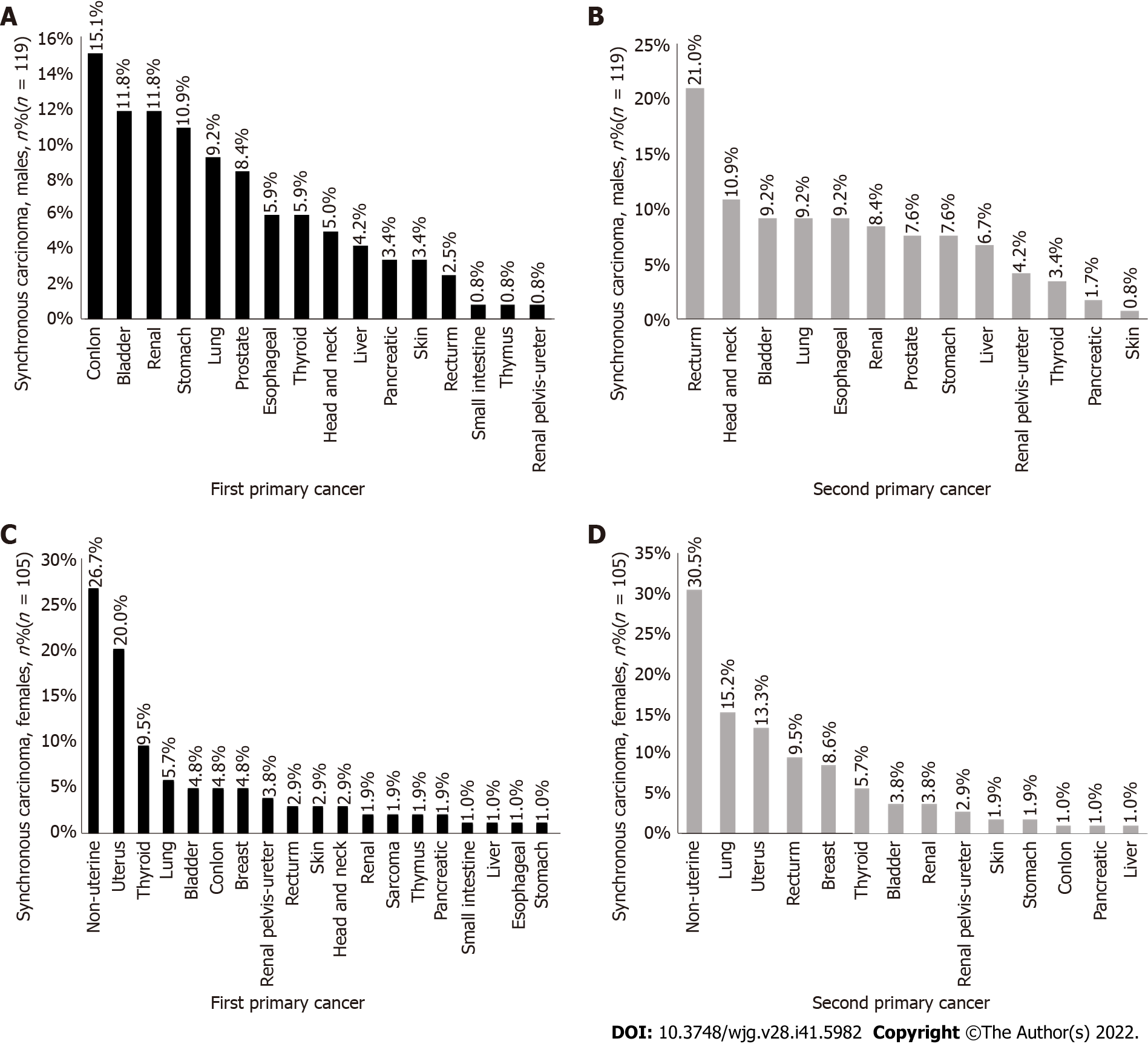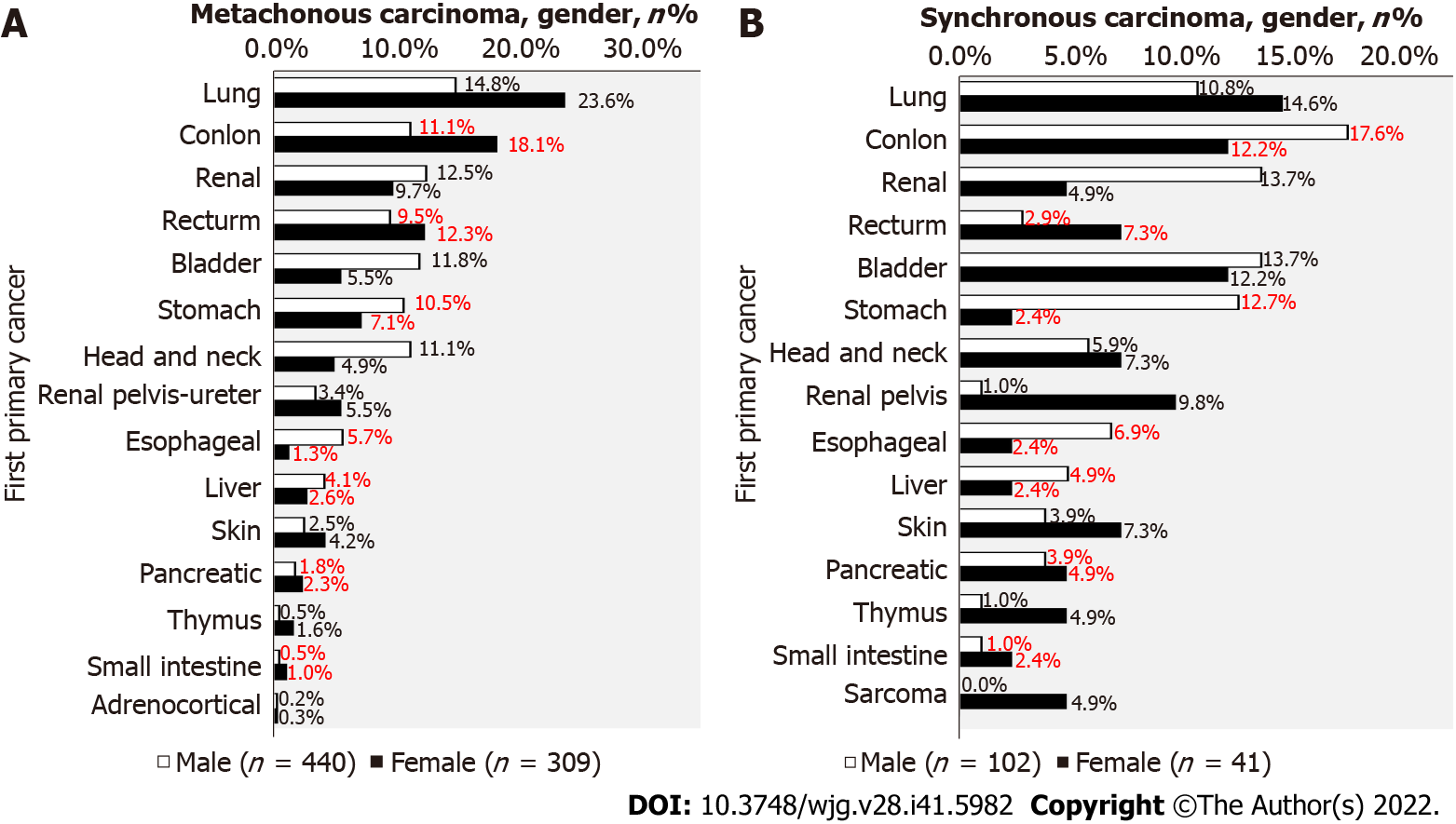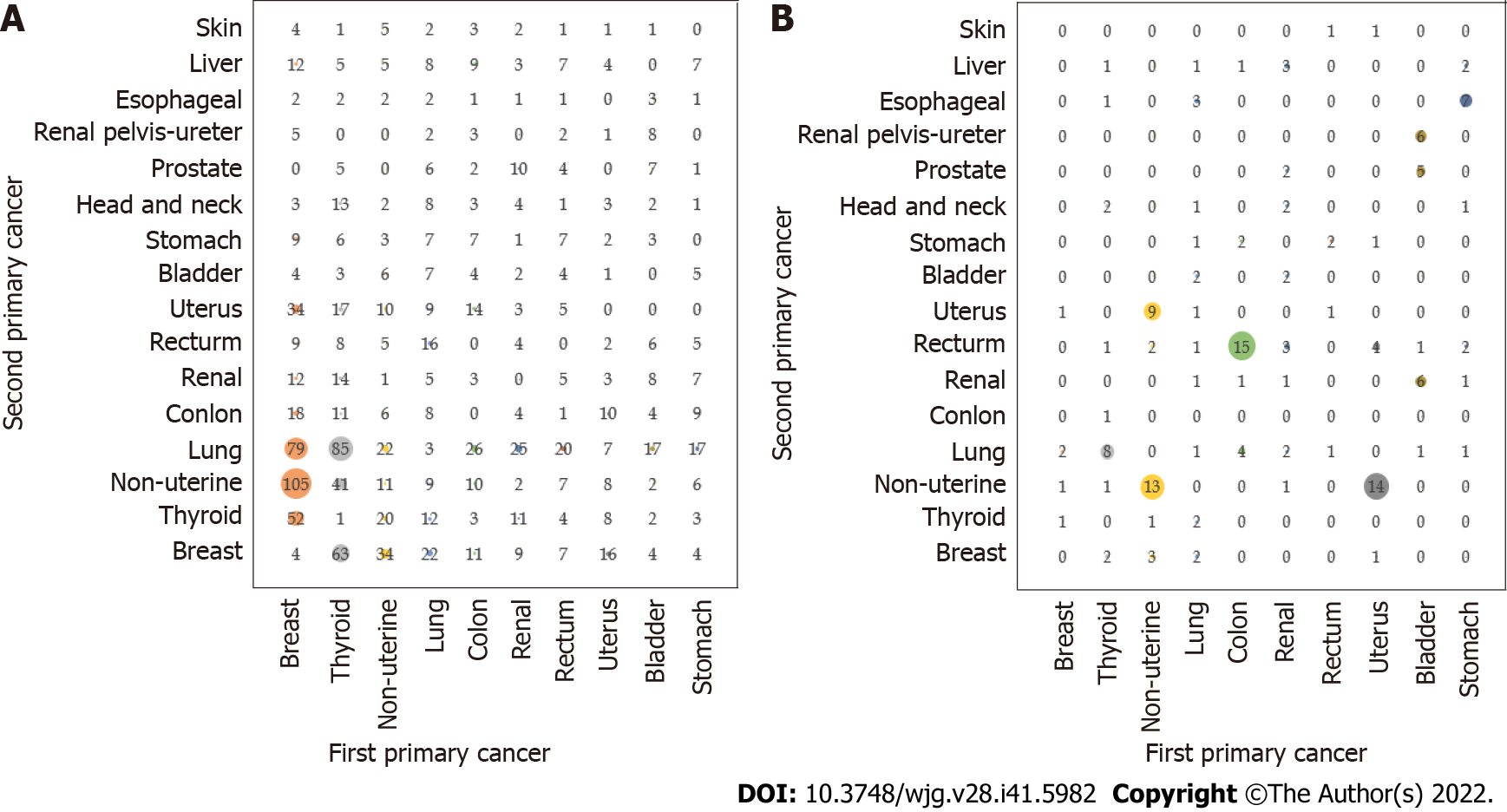Copyright
©The Author(s) 2022.
World J Gastroenterol. Nov 7, 2022; 28(41): 5982-5992
Published online Nov 7, 2022. doi: 10.3748/wjg.v28.i41.5982
Published online Nov 7, 2022. doi: 10.3748/wjg.v28.i41.5982
Figure 1 Distribution of first and second primary cancers of multiple primary cancers.
A: The first primary cancer; B: The second primary cancer.
Figure 2 The proportion of male to female first primary cancer and second primary cancer metachronous cases.
A: The first primary cancer is distributed in men with metachronous cancer; B: The second primary cancer is distributed in men with metachronous cancer; C: The first primary cancer is distributed in women with metachronous cancer; D: The second primary cancer is distributed in women with metachronous cancer.
Figure 3 The proportion of male and female cancers of the first primary cancer and the second primary cancer in synchronous cancer.
A: The distribution of the first primary cancer in men with synchronous cancer; B: The second primary cancer in men with synchronous cancer; C: The distribution of the first primary cancer in women with metachronous cancer; D: The second primary cancer in women with metachronous cancer.
Figure 4 After excluding the influence of male-female specific malignant tumors, the proportion of male and female digestive system malignant tumors.
A: The proportion of male and female primary malignant tumors after excluding the influence of male-female specific cancers, the proportion of male and female primary tumors of metachronous cancer; B: The proportion of male and female primary malignant tumors of synchronous cancer. The red numbers represent the percentage of digestive tumors.
Figure 5 The top ten combined cases of first primary cancer and subsequent second primary cancer of metachronous and simultaneous multiple primary cancer.
A: The combination of first primary cancer and second primary cancer of metachronous cancer; B: The combination of first primary cancer and second primary cancer of synchronous cancer.
- Citation: Yang XB, Zhang LH, Xue JN, Wang YC, Yang X, Zhang N, Liu D, Wang YY, Xun ZY, Li YR, Sun HS, Zhao LJ, Zhao HT. High incidence combination of multiple primary malignant tumors of the digestive system. World J Gastroenterol 2022; 28(41): 5982-5992
- URL: https://www.wjgnet.com/1007-9327/full/v28/i41/5982.htm
- DOI: https://dx.doi.org/10.3748/wjg.v28.i41.5982









